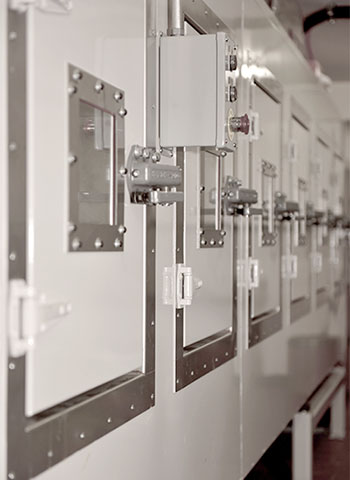Technology
Dry chemistry reagent strip technology has evolved from a simple litmus paper into a highly advanced technology during the past 50 years. It converts the labor intensive laboratory tests into a simple dip-and-read test with results in seconds and transforms the practice of diagnostic, monitoring testing into a new level. For example, a 45 second test for blood sugar using a single drop of blood was not envisioned as possible 20 years ago, but now is a every day routine for diabetes. The accuracy and precision of those blood tests is not less than those performed in the laboratory using liquid reagents.
Scientists at IBT (Integrated Biomedical Technology, Inc) have involved in the development of dry chemistry reagent strip for over 25 years, specifically, in the development of whole blood tests, urine reagent strips, chemical disinfectant tests and other bio-chemical tests. The company has received 8 patents plus several more pending on the chemical testing of the commonly used disinfectants such as bleach, chlorine, chloramine, peracetic acid, glutaraldehyde and formaldehyde. Those patented technologies allow us to develop a test strip for testing of the disinfectants at the levels where have not been possible before.
The basic principle of the dry strip technology, in fact, is very simple. It involves a simple process of impregnating the liquid reagents into an absorbing material and drying it in an oven. A novice can easily develop a working prototype in three months, yet may take another three years to perfect the test to the desired performance characteristics.

The most common problems encountered in the strip development are:
- Lack of thermal stability – The strip becomes unstable and requires refrigeration for long term storage.
- Uneven color development – The strip develops a patchy color pattern, which often is difficult to read and interpret.
- Limited quantitation range – The strip has narrow quantitation range. It either lacks the sensitivity for detection of critically low level analyte or, is unable to differentiate high levels of analyte. In either case, it makes the strip less effective and could provide false sense of security in certain application.
- Interferences – The strip reaction may be interfered by substances present in the test sample thus causing false positive or false negative reaction. For detection of chemical disinfectant, strip specificity or chemical interference usually is not a problem. In testing of biological fluids, elimination of potential interferences may become a major roadblock in the development of the test.
Immunochemical Tests
Since the invention of radio immunoassay nearly 50 years ago, tests utilizing the specific binding between antigen and antibody has evolved into a major analytical format. Such tests provide good sensitivity and specificity. In order to avoid hazardous radioactive isotope, many of the test have switched to the use of enzyme, fluorescence chemicals, color dyes, colored beads or gold conjugate as a signal markers. Some of these indicator conjugate may alter the biding kinetics of antigen antibody.
Optimal binding of antigen antibody requires a proper ionic and hydrophillic environment. IBT has developed a proprietary cocktail, which will promote the maximal antigen antibody binding and reduce nonspecific binding of the antibody to the membrane matrix. The result is a test, which has a cleaner reaction band and works well in extreme conditions of high salt or pure water sample media.



